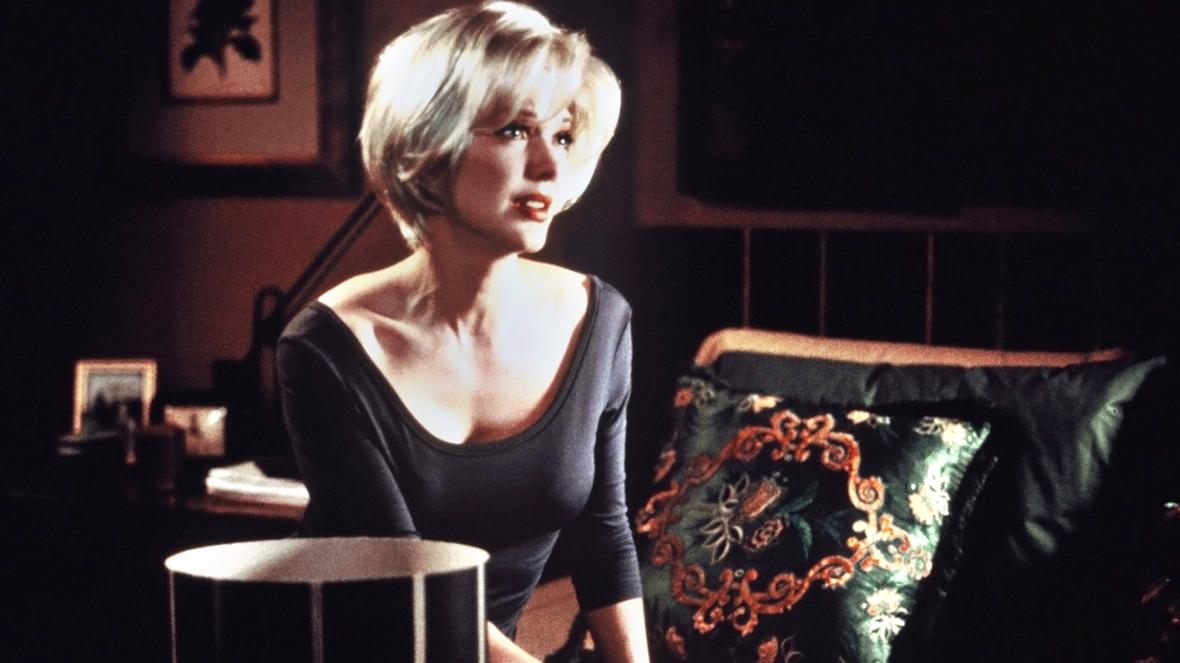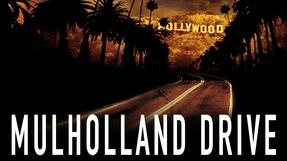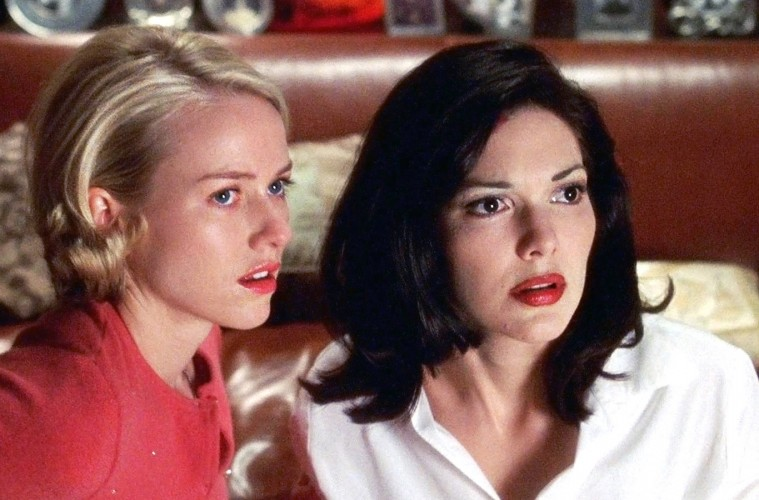It is? an illusion!
by Cammila Collar
 Laura Harring in Mulholland Drive, image courtesy Universal
Laura Harring in Mulholland Drive, image courtesy Universal
In some ways, the films of David Lynch are the best for deconstructing themes and extracting metaphors. They?re so conceptual and dreamlike, they sometimes veer more towards abstract expressionism than linear storytelling. But ironically, that?s the very same quality that makes his films frustratingly difficult to break down. Alongside his partially obscured plot points and embedded messages about society, there?s also a certain amount of ephemeral cinematic poetry ? things so strange and unreal that they seem at first like they must mean something, and yet, that meaning isn?t definite, it?s just a feeling.
 Stream a curated collection of late-night favorites. New movies featured every Friday.
Stream a curated collection of late-night favorites. New movies featured every Friday.
Which is to say, not everything you see in Lynch?s films mean something specific. Just the same, Mulholland Drive does have a driving, overall message: that Hollywood is a merciless, destructive place where people with dreams, talent, and inspiration are crushed beneath the boot-heel of a vicious power- and profit-driven system. He just gets at that message in his typically surreal, byzantine way.
 Watch Mulholland Drive on Tribeca Shortlist
Watch Mulholland Drive on Tribeca Shortlist
The first and second halves of the movie feel like parallel universes, with the same actors playing similar but different characters with the names all switched around. In the first half, the opening scene finds a gorgeous brunette (Laura Harring) in a limo, scarcely surviving a car crash in the Hollywood hills. Meanwhile, a sweet, small-town blonde named Betty (Naomi Watts) arrives in L.A. with dreams of becoming an actress. Everything looks bright for Betty; she befriends everyone she meets, she?s staying rent-free in the gorgeous, upscale apartment of her out-of-town aunt, and later, we see her attend her first audition in which she?s personally introduced to the extremely friendly director, producer, and big name co-star.
The New Streaming Service for Movie Lovers
A diverse selection of films curated by actors, directors and industry insiders.
medium.com
Meanwhile, the brunette from the car crash stumbles from the wreck and in her confused state, seeks shelter in Betty?s new place. Betty soon discovers that the woman has amnesia from the event and can?t remember who she is. She takes on the name Rita and almost immediately, she and Betty become best friends, running around town looking for clues that will reveal who Rita really is. These antics are all stylized to seem spooky and exciting but mostly safe, with the two of them peering into windows and making anonymous phone calls like girls from a Nancy Drew novel. The only exception to this is a moment when they sneak into the apartment of a woman they?ve determined is a friend of Rita?s named Diane Selwyn, whose horrifying decomposing body is found on the bed. Later, sharing the huge bed at Betty?s aunt?s, Rita and Betty succumb to a mutual attraction and consummate their passion in a rhapsodic love scene.
Meanwhile, a rising, hotshot director is fiercely cajoled by a room full of powerful and cryptic executives to cast a particular actress named Camilla in his next movie. Camilla is a honey-haired vixen with pouty lips. She?s only shown briefly and it?s unclear why she wields such importance, but her presence does seem subtly malevolent.

The second half of the movie finds Watts playing another struggling actress, but this time, her name isn?t Betty, it?s Diane Selwyn, and she lives in Diane?s apartment from the first half of the film. Diane is depressed, unkempt, and near a mental break. We learn through flashbacks that she was in a relationship with the brunette who was named Rita in the first half ? though here, her name is Camilla and she?s a rather successful actress. Camilla left Diane for the director of her recent movie, and Diane is heartbroken to the point of devastation. Her hopes alight when Camilla invites her to a party at her new place, but it turns out to be a cruel joke by the apparently heartless Camilla, who forces Diane to watch as she drapes herself all over the director and plants discreet kisses on a beautiful girl ? the honey-haired woman who played Camilla in the first half. Still painfully in love with Camilla and losing her mind with grief, Diane hires a lowlife hitman to have Camilla killed via a staged car crash, and later becomes so overwrought with guilt that she shoots herself in the head.
Here?s what it all means: the first half of the movie is a dream ? a Death Dream, which appears for Diane after she?s killed herself. It?s the bright, hopeful life Diane imagined before she came to Hollywood, before the callous, inhuman nature of the city destroyed her. The second half of the film is Reality ? aside from those notes of cinematic poetry Lynch is so fond of. In the Dream, Diane and Camilla take on the arbitrary names Betty and Rita. Diane is casting herself and her lover as new people, with their meanness and baggage excised. She takes the woman her lover scorned her for ? the honey-haired woman from the party ? makes her a distant, malevolent figure, and renames her Camilla, thus reassigning her all of Camilla?s cruelty and malice to her.
The dream is mostly perfect except for a few key moments. First, there?s the instance where Betty and Rita discover the corpse of Diane ? horrifying of course, because Diane is actually seeing herself. The second is a very meaningful sequence at a theater.
The Spanish emcee at this club spends several minutes explaining with grandiose theatricality that there is no live music in this theater. The instruments you hear are all on tape. A trumpeter appears playing notes on his horn, but soon removes it from his lips as the song keeps playing, illustrating the emcee?s proclamation, ?Hay no banda!? ? there is no band! ?Hay no banda? is repeated almost like a brutal incantation, which sends Betty into momentary convulsions.
When the main act takes the stage, she?s a tired looking woman with imperfect makeup who proceeds to cry out a heartbreakingly beautiful rendition of Roy Orbison?s ?Crying? in Spanish ? completely a cappella. Her exquisite voice is gorgeous, even laid bare in the silent theater, and Betty and Rita begin to weep bitterly, shaken with overwhelming sadness throughout the performance ? which ends with the singer falling to the floor dead.
No Hay Banda!
The emcee?s pronouncement ?THERE IS NO BAND? is perhaps Lynch?s most trenchant comment on Hollywood. This, he is saying, is not a place where real, breathing things like creativity, talent, and inspiration live or grow. This is a place where the only things produced are lifeless, canned, lab-created and factory-made?and yet, somehow, despite the artifice, these illusions have the power to move us, sometimes even more than reality itself.
Being bombarded with this truth is painful for Betty and Rita, and only becomes more so when the singer begins her performance. She?s not a factory creation, she?s real and unglamorized, her heartrending talent and sincerity apparent without the auditory or visual gloss of the Hollywood machine. And so, of course, the singer is doomed. The tragedy that such beauty and ability will never be given a platform to be shared but rather, will suffer and die just like Diane?s, pierces through the Death Dream to reveal the emptiness and disappointment of Reality. And a few minutes later, that?s just what we get. Lynch takes a beat and begins the second act ? the Reality half of the film. Which will, of course, lead to Diane?s suicide, which will lead to the ensuing Death Dream sequence, on and on in an endless cycle that, much like the constant stream of hopefuls arriving in L.A. to pursue their doomed dreams, will never end.
Watch Mulholland Drive on Tribeca Shortlist now.
Shortlister and Tribeca Film Festival Programming Director Cara Cusumano on rule-breaking director David Lynch


